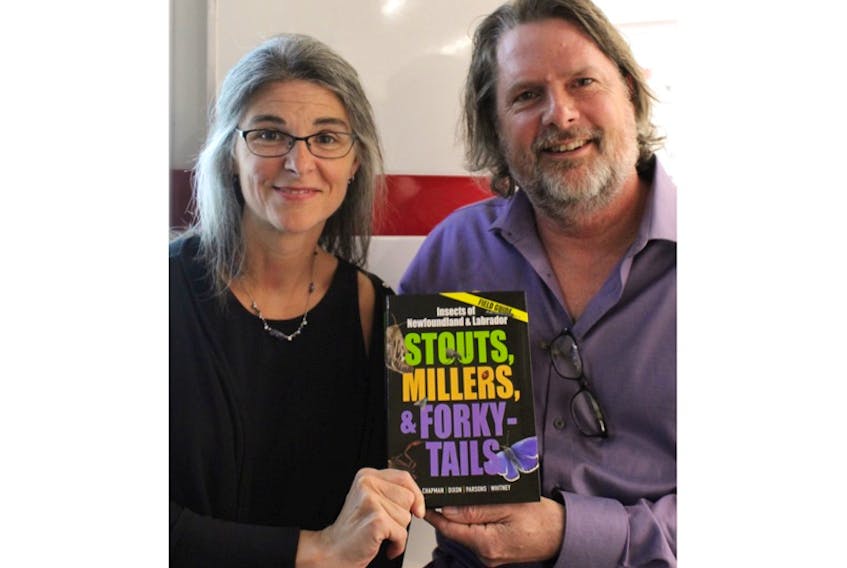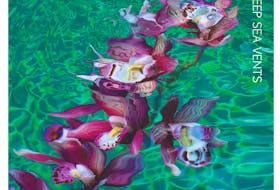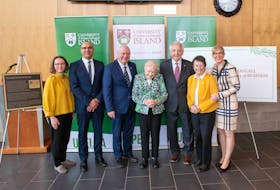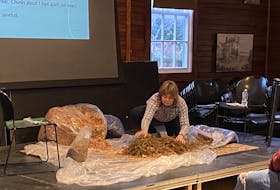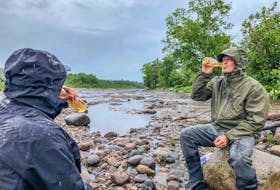ST. JOHN'S, N.L. — “Bugs Bugs Bugs, If I had them all in jugs,
I'd dig dig dig, till a big big hole was dug dug dug dug--
And that would be the end of the bug song...”
— Stompin’ Tom Connors
The movie “A Bug’s Life” captured attention when it came out just over 20 years ago, as people young and old were captivated like a moth to the moon about the world beneath our feet — the creepy crawlers’ world.
Emerging from its cocoon is a field guide to Newfoundland and Labrador’s bugs’ lives.
Tom Chapman, Peggy Dixon, Carolyn Parsons and Hugh Whitney are the authors of “Stouts, Millers and Forky-Tails: Insects of Newfoundland and Labrador,” and they have all been bitten by the bug, probably more than once.
“I remember going out in a dress as a kid and collecting as many carpenters as I could in my dress to show my mom,” Parsons said.

The guide was not something they came up with on the fly. It’s been a work in progress for the past three years, with Whitney being the starting force.
If you ever wondered what species a carpenter was, how an earwig is similar to your mom, or you just want to learn more about the false scorpions (yep, scorpions) you have in your house, the guide is for you.
It features a profile of more than 300 insects: spiders, butterflies, ants — talk about a dating website!
“First of all, the guide reflects our expertise as researchers,” Chapman said. “A lot of what we profiled has to do with what the public has shown us they were interested in.”
Each author had their own contributions to the book, like who got to study the butterflies and who got to study the stink bugs.
They added a section that were non-insect arthropods, since “Newfoundlanders and Labradorians don’t discriminate against their creepy crawlies,” Chapman said.
“I kind of saw it as a fireside chat,” he said about the field guide.
“It’s made for people who are mildly to extremely interested in the world around them. There’s a whole pile of Newfoundlanders who take notice and this is for them,” Chapman said.
“It can be for anybody who likes to pick up a book and flick through photos. I think it’s really accessible to a wide range of people,” Parsons said.
Chapman said the process was a long one, but very rewarding. The research put into the field guide was extensive and explored quite a bit of Newfoundland history.
“It was interesting adding a cultural aspect as well. We didn’t want it to be strictly, this is a mosquito. We wanted to add a bit of cultural history in there as well," Whitney said.
The field guide references the Newfoundland English Dictionary, quotes from soldiers in the Royal Newfoundland Regiment and insect-inspired literature from Newfoundland authors, like Tom Dawe.
It also stays close to home by featuring some of Chapman’s own students and their work.
In 2008, Rebecca Mattinson, a former student of Chapman’s, surveyed people at the Avalon Mall and asked them what their least favourite arthropod was.
Earwigs were the least favourite with flying colours. It may be because of “their false reputation of crawling in people’s ears and burrowing in their heads,” Whitney said.
Another student from Chapman’s class, Ryan Oram, is now a curatorial assistant at the Royal Saskatchewan Museum.
“He is out there revising a whole genus of bees,” Parsons said. “I think he started off working in the insectarium in Deer Lake.”
If the field guide has you flipping pages instead of itching, the authors have a few suggestions about how to break into the hive.
“If the audience out there is fearful of insects, they’re all around you and the best way to desensitize yourself to that part of the world is to buy our book and look at the pages." — Tom Chapman
“Informally, you can teach yourself. Photography can be a way in. People enjoy collecting, so that is something to do. Butterflies and moths are commonly collected by the public,” Chapman said. “We have those types of people in the province as well — that’s where we are getting the photographs from.”
He also had one piece of advice for insectophobes.
“If the audience out there is fearful of insects, they’re all around you and the best way to desensitize yourself to that part of the world is to buy our book and look at the pages,” Chapman said.
“Looking at the pictures is the first step of cognitive therapy in helping someone to get past it.
“And our book is cheaper than cognitive therapy.”
The launch for the field guide “Stouts, Millers and Forky-Tails: Insects of Newfoundland” will be June 27 at the Memorial University Botanical Garden at 306 Mount Scio Rd. in St. John’s from 5-7 p.m.
Twitter: @JasmineBurtNL
MORE FROM JASMINE BURT

